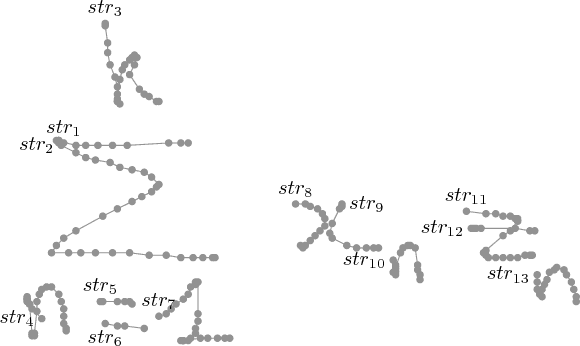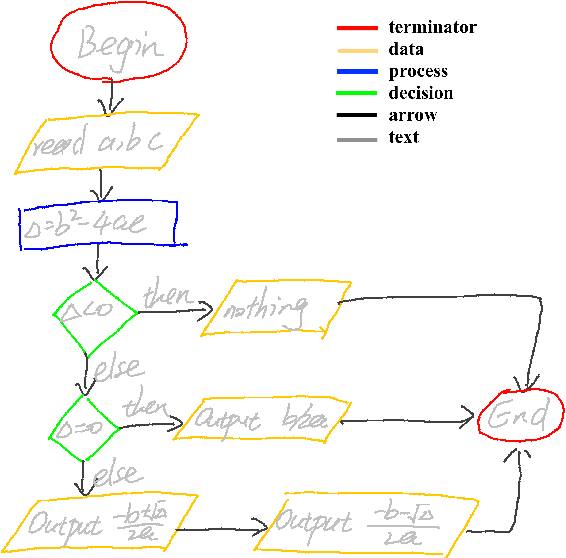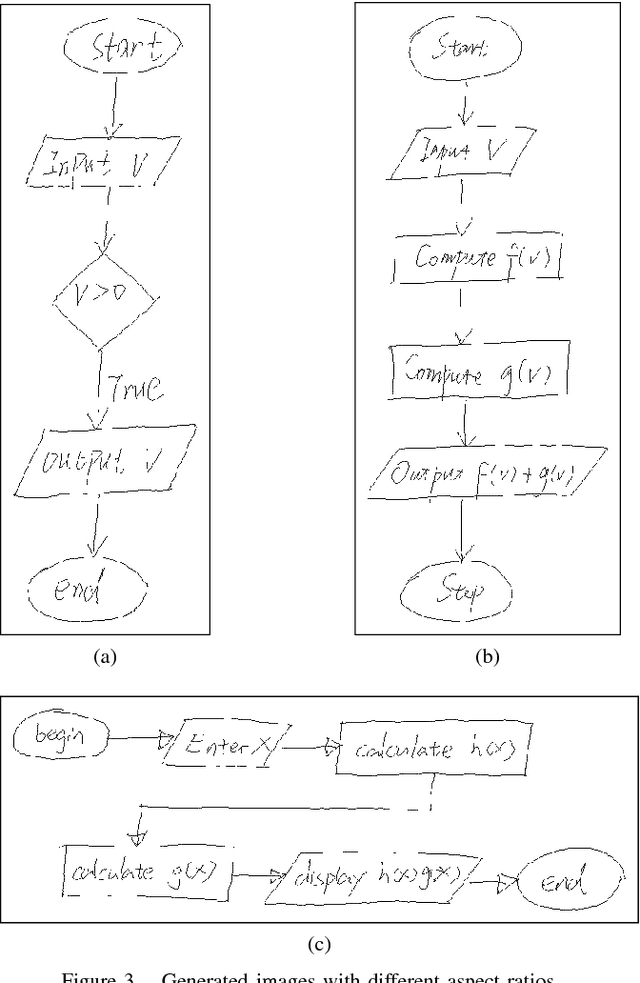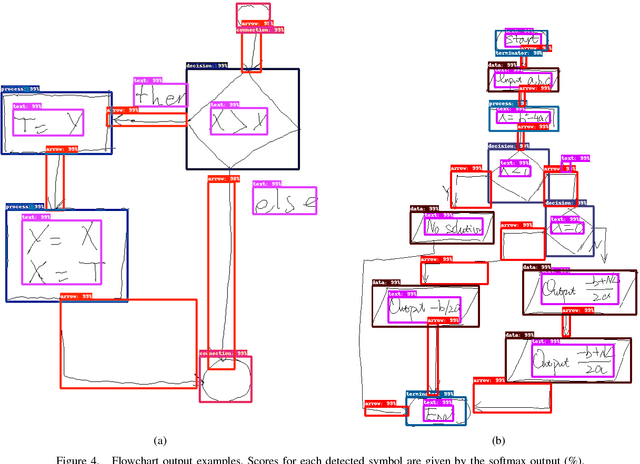Frank D. Julca-Aguilar
Symbol detection in online handwritten graphics using Faster R-CNN
Dec 13, 2017



Abstract:Symbol detection techniques in online handwritten graphics (e.g. diagrams and mathematical expressions) consist of methods specifically designed for a single graphic type. In this work, we evaluate the Faster R-CNN object detection algorithm as a general method for detection of symbols in handwritten graphics. We evaluate different configurations of the Faster R-CNN method, and point out issues relative to the handwritten nature of the data. Considering the online recognition context, we evaluate efficiency and accuracy trade-offs of using Deep Neural Networks of different complexities as feature extractors. We evaluate the method on publicly available flowchart and mathematical expression (CROHME-2016) datasets. Results show that Faster R-CNN can be effectively used on both datasets, enabling the possibility of developing general methods for symbol detection, and furthermore, general graphic understanding methods that could be built on top of the algorithm.
Image operator learning coupled with CNN classification and its application to staff line removal
Sep 19, 2017



Abstract:Many image transformations can be modeled by image operators that are characterized by pixel-wise local functions defined on a finite support window. In image operator learning, these functions are estimated from training data using machine learning techniques. Input size is usually a critical issue when using learning algorithms, and it limits the size of practicable windows. We propose the use of convolutional neural networks (CNNs) to overcome this limitation. The problem of removing staff-lines in music score images is chosen to evaluate the effects of window and convolutional mask sizes on the learned image operator performance. Results show that the CNN based solution outperforms previous ones obtained using conventional learning algorithms or heuristic algorithms, indicating the potential of CNNs as base classifiers in image operator learning. The implementations will be made available on the TRIOSlib project site.
 Add to Chrome
Add to Chrome Add to Firefox
Add to Firefox Add to Edge
Add to Edge